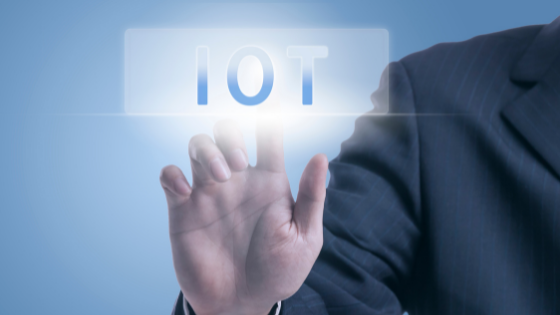Connecting a lightbulb to the internet seems overly cumbersome and complicated, not to mention ULTRA geeky:
Why pull a Sheldon and go through all that work when you can simply walk over to the wall and flip a switch? Most people don’t even want to fumble with their smartphones just to find their way to the bathroom. The truth is that the hassle may not be worth it for many of us. But what if you wanted to do more than physically flip that light switch yourself? In this special guest post, Wesley Faulkner of Facility Solutions Group (FSG) sheds some light on the business benefits of the energy IoT for better building performance.
What is the Energy IoT?
I’m sure you’ve heard of the Internet of Things, also known as IoT for short. If not, let’s review the basic idea so we can later apply it to the world of energy consumption. You take a sensor, device, or appliance, and provide it with an Internet connection so that it can be accessed over the network. Self-explanatory, right?
While that is the technical definition, IoT has become a catch-all term that means so much more. That “more” usually refers to the data associated with having a connected device. You see, when a device is connected to the internet, you can then monitor, log, and adjust nearly every function it was manufactured to perform. The ability to tap into such granular analytics has great potential to make energy efficiency a lot easier for everyone.
Here’s a hypothetical scenario to illustrate the energy IoT more clearly. Let’s say you’re a business owner and your electricity bill comes in at double what it was the previous month. With your IoT connected lighting system, you can open your web browser and see from the log that the lights were on 20% more than they were the previous month. By comparing with the previous year’s log, you can see that a similar spike occurred during the same month last year as well. These spikes or peaks moved you into a higher tier of energy usage, translating into a significant bump in your electricity bill.
From the same logs, you realise that only the stockroom lighting are accounting for these usage increases—these are the older incandescent bulbs you’ve been reluctant to replace due to retrofit costs. Upon further investigation, you notice that these increases just happen to coincide with your yearly prep for Black Friday, the biggest sale day of the year. With this data that you’ve collected from the logs, you are now able to make an informed decision whether to spread the inventory work over two months so as not to move into that higher tier of energy consumption, or to move forward with that long-overdue lighting retrofit. This type of historical data allows you to estimate cost savings and calculate the breakeven point to ensure you make the right choice for your investment.
Applying the IoT to Enhance Building Performance
In the above example, having both the electricity and light usage data was crucial for you as a business owner to compare energy consumption with costs. And with IoT, there are many equipment functions within a building that can be connected and automated to enhance performance, increase efficiency and reduce expenses even further. Air conditioners can be linked with a sensor that counts how many people are in the store, a motion sensor can be installed that triggers both lighting and the HVAC system, or an alarm that not only reports when it is armed or disarmed but can be programmed to turn off everything that’s not in use. The options and possibilities are overwhelmingly endless, and we’re only talking about a single building!
If you manage a portfolio of multiple buildings, the sheer number of IoT devices can be cumbersome and difficult to track without sophisticated software, or the expertise to make sense of it all. A misconfigured filter could send an alert every time a door is opened, or when the temperature changes a degree. In most cases, it’s not the actual data that is valuable—it’s the interpretation of that data. With great power comes great complexity. Those without the crucial energy management knowledge and skills to manage these energy IoT connections and decipher the data can soon lose focus of the big picture, seeing only the glaring problem that the software pops up in the form of an alert.
While connecting a lightbulb to the internet might seem pointless to some, real value can be attained with the proper systems in place.
Editor’s Note: This guest article was originally published on the FSG blog. It has been republished here with kind permission from the author, Wesley Faulkner. Some minor changes have been made to reflect DEXMA style considerations.
Wesley Faulkner is the Marketing and Communications Manager at Facility Solutions Group (FSG). Wesley has over 18 years of experience in product marketing, product management, strategic planning and software/hardware implementation. His ability to communicate advanced concepts to general audiences, stakeholders, and engineers has made Wesley a sought-after technical leader. He currently sits on the Advisory Board of SXSW Interactive and is a founding member of Open Austin, a group advocating government data transparency.




